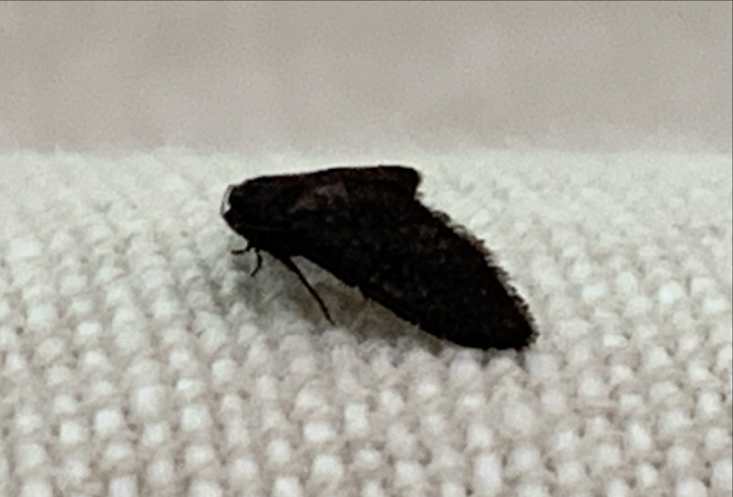With Australian Museum entomologist Dr Chris Reid
Sometimes I see and photograph things that look vaguely odd, but I forget about them. Here’s one of those things.
I photographed this small moth (about 5mm long) on our curtains a year ago. It was one of the most boring-looking moths around but that in itself was odd – there was no wing pattern, just uniformly black. The other thing that intrigued me was the head – it didn’t stick out forwards like a normal moth head, but was tucked under the thorax. I don’t really know why I photographed it as it was obviously a ‘micro-moth’ – one of those myriad families of small moths without a nice illustrated book or website to sort them out.
The uniform black colour was most interesting. Very few moths are black. So after a while this bugged me enough to try to identify it and the result was a surprise.
This is a ‘parasite moth’ and this species is Heteropsyche melanochroma [meaning: black colour]. The adults don’t feed (hence small head) and the caterpillars are external parasites of leaf hoppers. The caterpillars look like fat white waxy blobs and latch on to the back of the host – the photo (below) shows one riding on a doomed hopper in Western Australia.

The moth species was described by an American entomologist sent to Australia in 1904 by sugarcane growers in Hawaii to look for parasites of leaf hoppers. He described it in an obscure journal with a tediously long title ‘Report of work of the Experimental Station of the Hawaiian Sugar Planters Association, Bulletin’, which is fortunately available online.
Moth caterpillars are generally considered as plant feeding only, but the well-known clothes moths feed on wool and feathers, and cannibalism in crowded conditions is fairly common. However, parasitism is rare and only these ‘parasite moths’ (family Epipyropidae) are entirely parasitic as caterpillars.
In summer 2023/4 we had a big infestation of passionvine leafhoppers (Scolypopa australis) on our Wonga vine and that’s possibly why we had the moth.
Why is it black? Sap-sucking bugs leave sticky sugary secretions all over lower leaves of their hosts and these often become black due to the development of sooty mould. That’s my guess.






